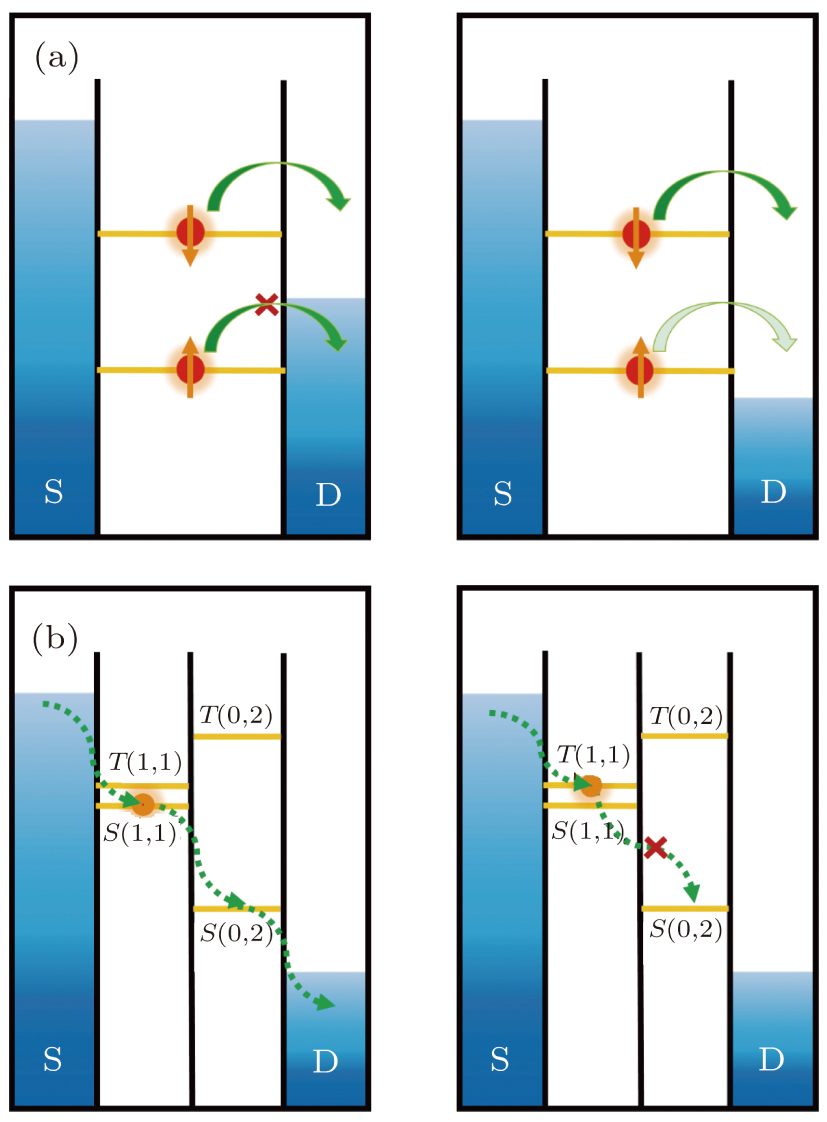Qubits based on semiconductor quantum dots
(color online) Energy diagrams explaining spin–charge conversion and Pauli spin blockade for qubit readout. (a) Energy-selective readout (left) and tunnel-rate-selective readout (right) are shown. The electron of the spin-up state in the energy-selective readout regime is not allowed to tunnel out of the dot since its energy level is below the Fermi energy level of drain (D) while its tunnel rate is much slower in the tunnel-rate-selective readout regime (denoted by the translucent arrow) and cannot be detected by the charge sensor during the measurement. (b) S(1,1) can be converted to S(0,2) (left) while T(1,1) cannot (right), thus a current through source (S) and drain (D) can be detected only if the qubit is in the singlet state and thus these two states can be distinguished. Or a charge sensor that can tell (0,2) from (1,1) is also able to read the spin state.
